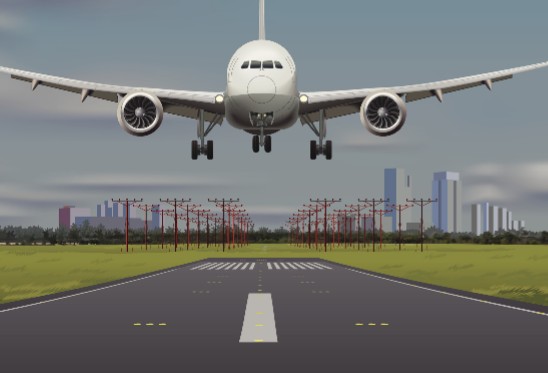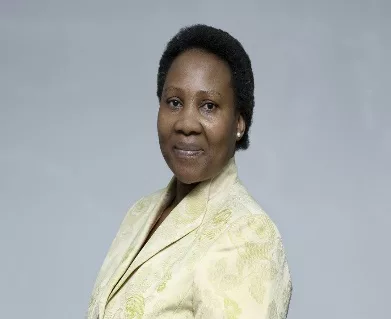|
Getting your Trinity Audio player ready...
|
Flying is one of the fastest-growing sources of greenhouse gas (GHG) emissions and the most climate-intensive form of transport, studies show.
Despite the fact that commercial aviation is responsible for only about 2-3% of global carbon emissions, researchers indicate that aviation emissions have more than doubled in the last 20 years and the sector is responsible for an estimated 4.9% of man-made global warming.
According to Air Transport Action Group, an industry group focused on environmental issues, airlines’ carbon dioxide (CO2) emissions reached about 915 million metric tons in 2019 and within Europe, emissions have grown 26% over the past five years.
Against this background, various stakeholders and corporates including the UK’s leading climate consultancy group, International Civil Aviation Organisation(ICAO), and the Carbon Offsetting and Reduction Scheme for International Aviation (CORSIA) among other entities and individuals are making a concerted effort to ensure that the aviation industry steps up its investments into new emissions-reducing technology and play its part in meeting international goals for emissions reduction.
Based on 2005 levels, the International Air Transport Association (IATA) is working tirelessly with its current target being for carriers to reduce carbon emissions to 325 million metric tons by 2050.
Recently, the head of IATA, Willie Walsh said achieving net-zero would represent only an incremental change, given the direction already set in 2009.
He highlighted that IATA will ask carriers to adopt the target at its annual meeting in Boston in October.
“IATA recognizes the need to address the global challenge of climate change and adopted a set of ambitious targets to mitigate CO2 emissions from air transport. There is need for more efficient aircraft operations, infrastructure improvements, including modernized air traffic management systems as well as a single global market-based measures to fill the remaining emissions gap,” he said.
Using a multi-faceted approach: the four-pillar strategy, IATA is determined to reach an average improvement in fuel efficiency of 1.5% per year from 2009 to 2020, cap on net aviation CO2 emissions from 2020 (carbon-neutral growth), reduction in net aviation CO2 emissions of 50% by 2050, relative to 2005 levels and improved technology, including the deployment of sustainable aviation fuels.
Walsh further stressed that IATA was determined to be part of the solution but insists that, in order to achieve these targets, a strong commitment was required from all stakeholders working together through the four pillars of the aviation industry strategy.
On the other hand, the 1997 Kyoto Protocol requested developed countries to work through ICAO to limit and reduce emissions from the sector.
After years of waiting for ICAO to take action in dealing with the aviation sector’s climate impact, the EU agreed in 2008 that emissions from international aviation would be included in its emissions trading system (EU ETS) from 1 January 2012.
In October 2016 ICAO agreed on a global market-based measure to address the growth in CO2 emissions from international aviation above 2020 levels.
Moreover, the EU has recently unveiled a sweeping climate change plan announcing a raft of climate change proposals aimed at pushing it towards its goal of becoming carbon neutral by 2050.
Key points of the proposal include a tax on aviation fuel and a 10-year tax holiday for low-carbon alternatives.
The measures billed as the EU’s most ambitious plan yet to tackle climate change, have been named the Fit for 55 packages because they would put the bloc on track to meet its 2030 goal of reducing emissions by 55% from 1990 levels.
In line with this, Willie Walsh said, “Aviation is committed to decarbonisation as a global industry. We don’t need persuading or punitive measures like taxes to motivate change.”
Other contributing actors making strides to tackle climate change are the members of the International Coalition for Sustainable Aviation (ICSA), for ambitious global and regional targets to reduce emissions within the aviation sector, for full inclusion of aviation in the European Union’s (EU) strategy to meet its reduction targets, and for removing exemptions on fuel taxation and Value Added Tax (VAT) for airlines in the EU.
On the other hand, CORSIA aims to stabilise CO2 emissions at 2020 levels by requiring airlines to offset the growth of their emissions after 2020.
However, it has been stated that it will be voluntary from 2021-2027, potentially only have mandatory effect after 2027, and will, at a maximum, offset only 21.6% of international aviation emissions.
A recent European Commission study found the problems with offsetting indicating that 73% of offsets from projects registered under the UN’s Clean Development Mechanism only partially delivered or failed to deliver the claimed emissions reductions.
“The aviation sector now runs the risk of repeating these mistakes by resorting to offsetting its emissions particularly as rules governing the offsets’ environmental integrity in CORSIA are unknown,” the study revealed.
Pertaining carbon offsets, the study pointed out that offsetting itself is incompatible with the Paris agreement, which requires all sectors and all states to reduce their emissions, not just pay others to reduce theirs.
Other stakeholders continue to emphasize that it is essential that other measures are adopted, especially measures that advance in-sector reductions, such as an efficiency standard for aircraft and ending subsidies.
They suggest that while ICAO continues to set only minimal climate ambition, it is important that the EU joins other developed regions and countries in showing leadership on this issue.
“The EU should therefore ensure that reductions in aviation sector emissions make a fair contribution to achieving the EU’s overall 2030 climate target, and it should adopt measures that ensure the sector makes its fair contribution to reducing Europe’s emissions.
“This includes ending tax exemptions and subsidies and investing in low-carbon alternatives,”
According to Stefan Gössling, a Swedish academic who is a professor at the Linnaeus University School of Business and Economics and Lund University’s Department of Service Management, reducing climate change is a critical global challenge.
“Commercial aviation is responsible for about 2-3% of global carbon emissions. In 2009 the industry put in place an ambitious and robust carbon emissions strategy, with targets and a four-pillar action plan.
“The airline industry’s global trade group will propose eliminating carbon emissions on a net basis by 2050, as pressure builds to improve the climate goals of a segment that’s come under increasing criticism for its use of fossil fuels,” said Gossling.
Meanwhile, the UK’s Climate Change Committee says that the industry needs to do more than plant trees if it is going to reach its ambitious goals of net-zero in three decades.
The head of the independent Climate Change Committee, Chris Stark emphasised the need to work on implementing practical measures that have the biggest potential impact on emission reduction for aviation.
He was speaking to MPs during an environmental audit committee in London in July this year.
“Aviation is unlikely to meet its 2050 target of net-zero CO2 emissions. As such, airlines, along with striving to cut emissions directly, will need to rely on other means of offsetting their contribution to global warming,” Stark said.
However, carbon offsetting projects, he added, meaning secondary investments such as planting trees to ‘make up’ for emissions, will not be enough.
“Airlines need to invest in alternative technologies. This includes the cultivation of biofuel, but perhaps most importantly, carbon capture and storage. Airlines themselves should share the burden of investment into new technologies rather than wait for governments and other actors to develop them further.
“It is something the aviation sector itself should pay for and therefore will increase the cost of aviation if those offsets have to be managed and paid for. These are not free passes for getting to net zero. We think that aviation should incur these costs directly,” Stark said Thursday as reported by the Guardian.
He further added that airlines’ commercial interest in negative emissions would grow if the cost of these technologies would decrease.
However, there is significant progress being made on direct air capture technology, which essentially sucks existing CO2 out of the air for sequestration. In December last year, United Airlines announced it would be making a multi-million dollar investment in an atmospheric carbon capture technology company called 1PointFive.
Mr. Stark told MPs that the reliance on technology and lack of focus on reducing demand for aviation in the government’s forthcoming ‘jet zero’ plan would please the industry but was not enough for the environment.
“But obviously, a big risk is that the technology doesn’t deliver. It is notable that demand management doesn’t get a look in.”
Under the United Nations Framework Convention on Climate Change (UNFCCC), emissions from international aviation are being treated separately in national accounting.






